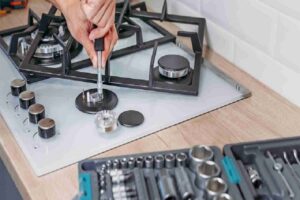Introduction:
Medical oxygen cylinders play a crucial role in the healthcare industry, providing a lifeline for patients needing supplemental oxygen. These cylinders are portable, reliable sources of concentrated oxygen that can be used in various medical settings. In this blog post, we will explore the diverse range of applications for medical oxygen cylinders and highlight their importance in saving lives. The Lifesaving Uses of Medical Oxygen Cylinders
Section 1: Oxygen Therapy
One of the primary uses of medical oxygen cylinders is oxygen therapy. This treatment involves administering oxygen to patients who have difficulty breathing or have low oxygen levels in their blood.
Oxygen therapy can manage various medical conditions, including chronic obstructive pulmonary disease (COPD), pneumonia, asthma, and respiratory distress syndrome in newborns.

Section 2: Emergency Medicine
Medical oxygen cylinders are essential in emergency medicine, where every second counts. Providing immediate oxygen support can differentiate between life and death in critical situations such as cardiac arrests, trauma, or respiratory failure.
Emergency medical responders, paramedics, and doctors rely on oxygen cylinders to stabilize patients and maintain their oxygen levels during transport to the hospital.
Section 3: Anesthesia and Surgical Procedures
During surgical procedures, anesthesiologists use medical oxygen cylinders to ensure patients receive adequate oxygen supply under anaesthesia.
The oxygen is mixed with other gases and delivered to the patient’s lungs through a breathing mask or an endotracheal tube. Oxygen cylinders are also used in post-operative recovery rooms to aid recovery.
Section 4: Home Healthcare
Many individuals with chronic respiratory conditions require oxygen therapy on a long-term basis. Medical oxygen cylinders allow these patients to receive treatment in the comfort of their homes, improving their quality of life.
Home healthcare providers supply patients with portable oxygen cylinders, allowing them to continue their daily activities while receiving the necessary oxygen support.
Section 5: Sports and Altitude Sickness
Medical oxygen cylinders find applications beyond the healthcare setting. In sports medicine, oxygen cylinders aid in athletes’ recovery after intense physical exertion or during high-altitude training.
Additionally, in mountainous regions or locations with high altitudes, medical oxygen cylinders can help alleviate symptoms of altitude sickness, such as shortness of breath and fatigue. The Lifesaving Uses of Medical Oxygen Cylinders
Conclusion:
Medical oxygen cylinders are indispensable tools in the healthcare industry, providing critical support to patients needing supplemental oxygen. These cylinders have many applications, from oxygen therapy to emergency medicine, anaesthesia, and sports medicine.
Their portability and reliability make them an essential asset in saving lives and improving the well-being of patients. As technology advances, we can expect even more innovations in the field of medical oxygen cylinders, further enhancing their effectiveness and accessibility.
Remember, medical oxygen cylinders should always be under healthcare professionals’ guidance. If you or someone you know requires oxygen therapy, consult a medical expert to ensure proper usage and monitoring.
The device must still be set to the specified LPM in the nonstop inflow controller. Oxygen cylinders also come in colourful sizes grounded on the volume of gas contained within( and, therefore, how long a person can use the oxygen in the tank before it runs out).
How to Use an Oxygen Tank at Home This step will explain how to operate your oxygen cylinder. Attach the tubing and nasal prickles( cannula) to the oxygen controller nipple as needed. Be sure to check that the tubing isn’t fraudulent or blocked. Acclimate your nasal needles ( cannula) to ensure a comfortable fit. Set your inflow rate to the setting handed by your croaker.
Avoid changing the inflow rate unless instructed by your croaker
Put the nasal prickles( cannula) in your nose and breathe typically. Still, you can test it by placing the nasal needles ( cannula) in a glass of water, If you’re doubtful about whether oxygen flows. However, the oxygen is flowing, If you see bubbles. Safety Tips for Using an Oxygen Tank Flashback: Oxygen must be handled safely, or it may beget fires.
Then are some tips on how to use your oxygen tank safely. Keep oxygen at least ten bases from open dears and other heat sources when using or storing oxygen. Oxygen cylinders and tubing bear the same consideration. Flashback, electric appliances like broilers, space heaters, hair dryers, electric robes, and electric razors have the eventuality to heat and may spark when in use.
Noway, bomb or allow smoking around any oxygen source and its tubing. Don’t use ignitable accoutrements near oxygen. Hair, aerosol sprays, maquillages, and makeup thinners pose pitfalls. Indeed certain petroleum products like Vaseline and VapoRub can pose a peril. A spark can snappily enkindle these products, adding the fire threat and severe becks.
Keep oxygen cylinders and tubing in well- voiced areas because oxygen builds up in the girding air and concentrates in clothes, coverlets, and curtains. Noway, store oxygen cylinders in an unrestricted space, similar to a closet or under a bed. Cover your oxygen cylinder from being bulled or knocked over.
Store the oxygen tank upright in an approved storehouse device. Now that you know what an oxygen cylinder is and how it works, we hope it helps you make a more informed decision regarding oxygen remedy and support. Still, always flashback that a registered croaker must define oxygen remedy since its abuse can lead to numerous complications.






